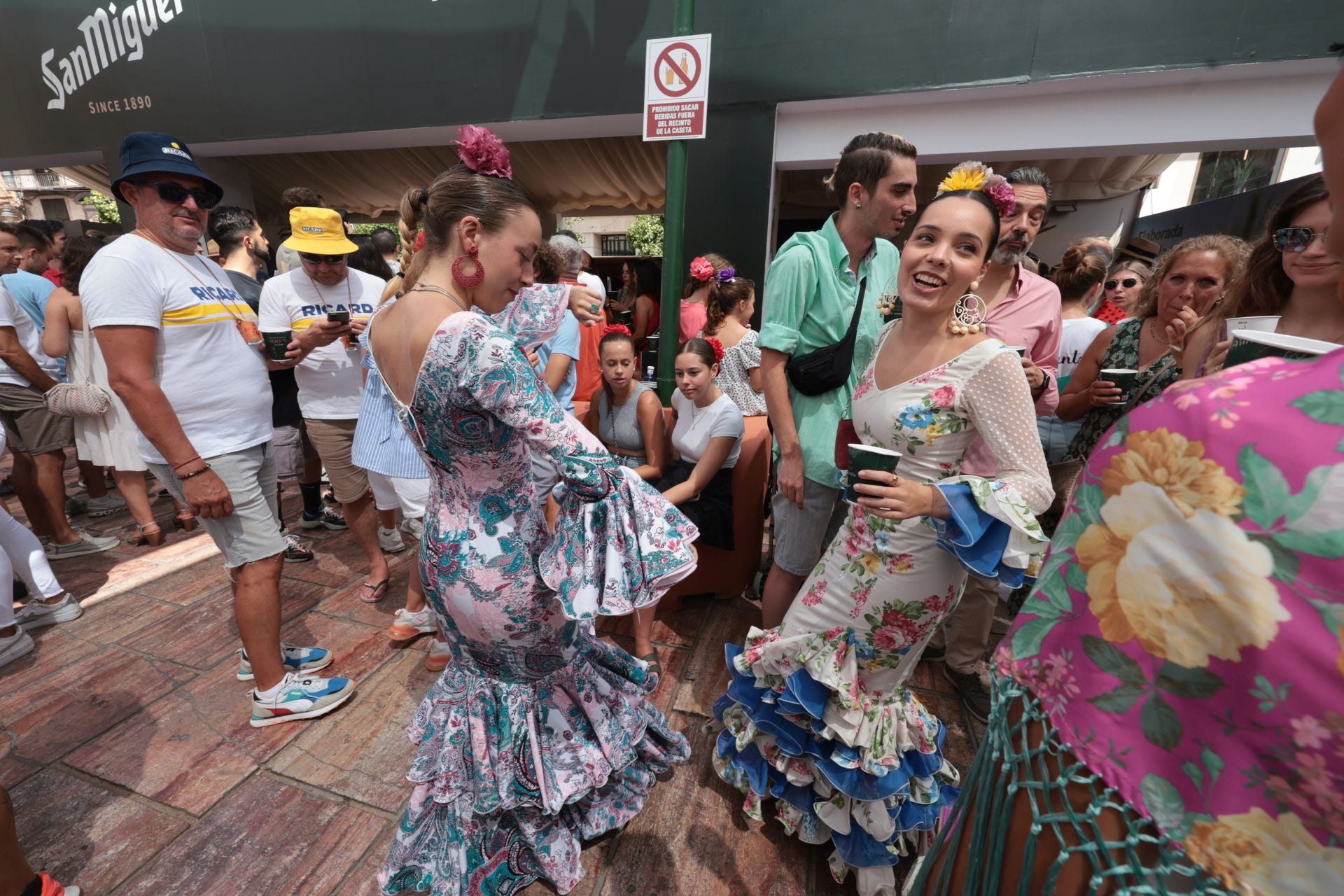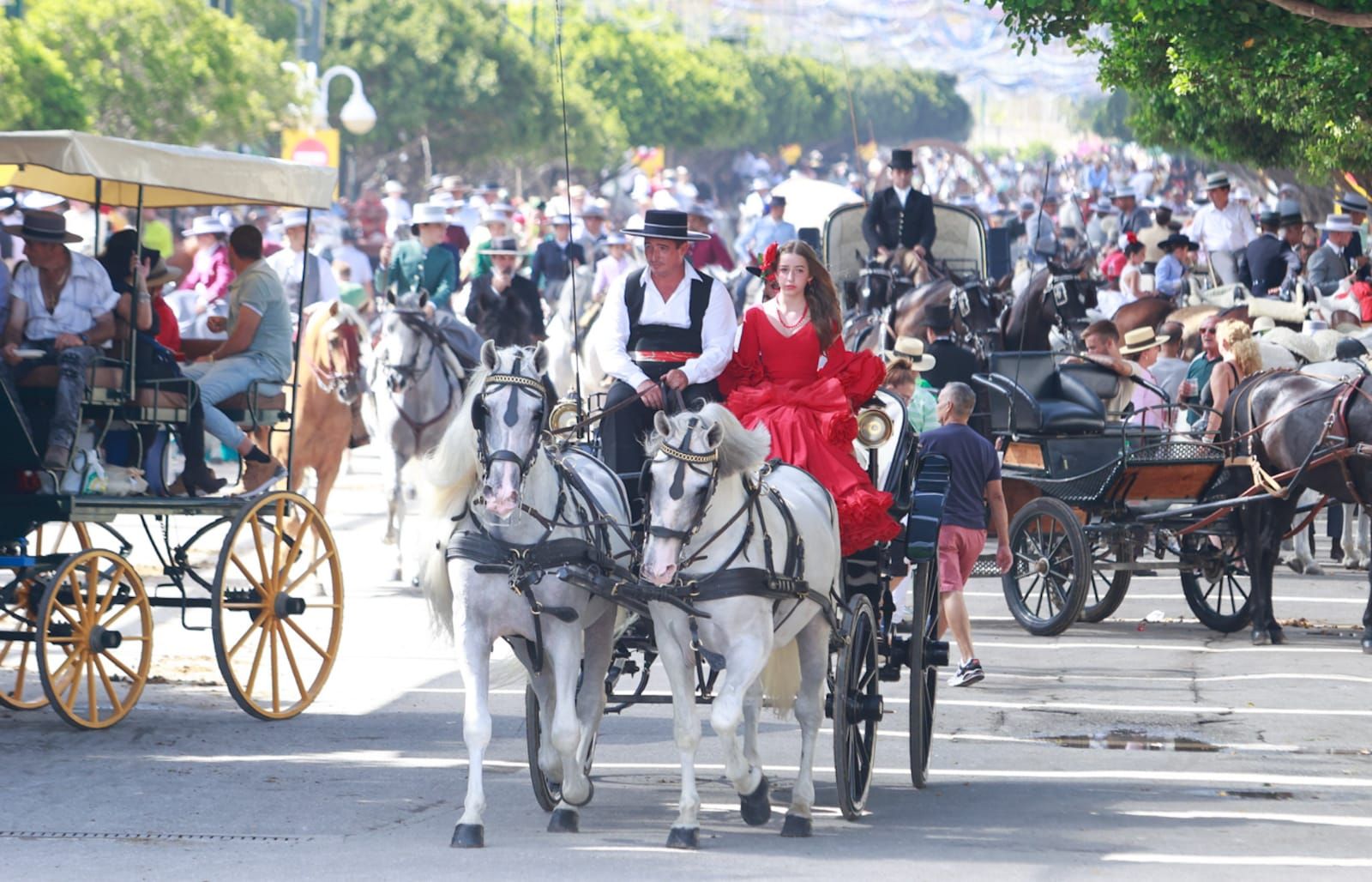Flamenco ready for the feria in Spain's Andalucía
The highlight of summer in the cities, towns and villages around the region is the local fair, when the streets are filled with colourful traditional costumes
Myrto Kaltsidou
Malaga
Wednesday, 31 July 2024, 11:34
Few traditional costumes are as recognisable as the flamenco dress, native to the region of Andalucía in southern Spain. Women in Spain have donned this beautiful garment to the feria since the late 19th and early 20th centuries, where, replete with dance performances, bullfights, fair rides and horse carriages, they have become the most spectacular celebration of Andalusian culture, music and food.
It is fascinating how this cultural attire, imagined by the rest of the world as a striking red and black gown with polka dots and voluminous ruffles on the skirt and sleeves, has become an internationally identifiable symbol of Spain.
But why has the flamenco look, unlike any other one of Spain’s regional outfits, gained such status? SUR in English spoke to Moisés Guerrero López, owner of Viva La Feria (Calle Muro de Puerta Nueva), a flamenco dress shop in Malaga city, to give some insight into this fascinating gown.

“Because we are lucky to have a regional dress that suits every woman… It will equally suit a young girl who wears size XS as it will a person wearing size XXL. The flamenco dress adapts to the body of each woman.”
"We’re not aware of the enormity and value that our Andalusian traditions have abroad," says dress shop owner
One unique aspect of the flamenco dress is the sheer number of names it is given in Spanish, the main ones being ‘traje de flamenca’ (‘flamenco dress’) and ‘traje de gitana’ (‘gypsy dress’).
The latter comes from the influence of the Romani people, who came to the Iberian Peninsula in the 15th century, settling in Andalucía - mainly in Seville, Huelva and Cadiz - in the 16th century. It was their fusion with Andalusian culture that brought forth flamenco as a dance form, with which we most often associate the flamenco dress, though this has its roots in the traditional outfits worn by Andalusian women to the Feria de Abril in Seville (originally created as a livestock fair in 1847). Indeed the flamenco dress, which has its origins in Seville, is also used to dance to Sevillanas, a type of folk music and dance that brings local ferias to life, from which the term ‘traje de Sevillana’ is derived. The ‘traje de faralaes’, on the other hand, comes from ‘faralá’, the word for the ruffles or frills that are typical of flamenco skirts.

But it is not just women in Andalucía or even just in Spain who wear these traditional outfits. Although dresses are also sold online to places around the country, such as Barcelona, Galicia, the Basque Country and Madrid, from where many come down to Andalucía to attend ferias in the spring and summer, Moisés says that flamenco dresses are also very popular across Europe; in France, Italy and especially Belgium, where the Andalusian communities strive to preserve their cultural heritage. As for Viva La Feria, which celebrates its 40th anniversary this year, they have delivered flamenco outfits and dance shoes as far as Australia. “We’re not aware of the enormity and value that our Andalusian traditions have abroad,” says Moisés.
Regarding the price, high-end flamenco dresses can cost between 500 and 850 euros and more.
Men also get dressed up for the feria, albeit their choice of attire varies depending on the level of formality of the occasion and personal preference. Those who participate in equestrian activities or who wish to embrace the traditional festive spirit often opt for the ‘traje de corto’, comprised of a short, fitted jacket (‘chaquetilla’), high-waisted trousers, a wide-brimmed hat (‘sombrero cordobés’) and leather boots (‘botas camperas’).

To prepare their outfit for the feria, women usually go to a flamenco shop where they either pick a dress off the rack that will then undergo some alterations, or they have one made from scratch – with all its intricacies, a flamenco dress can take around four or five hours to make. In any case, peak season for these shops comes in the spring, with the arrival of the Feria de Abril in Seville, the Feria de Jerez and the Feria de Cordoba, among others, as well as the different pilgrimages, especially El Rocío in Huelva. For Viva La Feria, a high production rate translates to the elaboration of over one thousand dresses per year.
As for their colours, mainly greens, purples, black and white dresses are in fashion (interestingly enough, the first two compose the colours of Malaga’s flag). However, every year regardless of the trends, red remains the most opted for, proving to be both timeless and traditional: “A red flamenco dress is very flattering on a woman, no matter her age or size,” Moisés says.
Polka dots have also proven to be lasting feature of the flamenco look, though the trends also lend themselves to dresses with lots of volume, plunging necklines and ruffled sleeves, as well as those which are backless or asymmetrical. And no flamenco look is complete without accessories, be it a shawl, lavish earrings, a fan, a ‘peineta’ (ornamental comb) or flowers in the hair.



